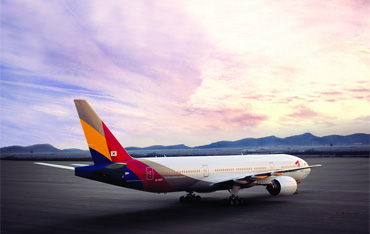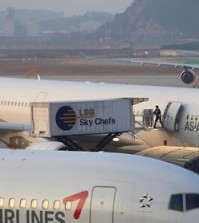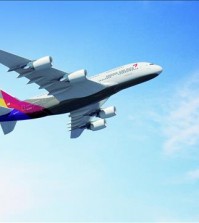- California Assembly OKs highest minimum wage in nation
- S. Korea unveils first graphic cigarette warnings
- US joins with South Korea, Japan in bid to deter North Korea
- LPGA golfer Chun In-gee finally back in action
- S. Korea won’t be top seed in final World Cup qualification round
- US men’s soccer misses 2nd straight Olympics
- US back on track in qualifying with 4-0 win over Guatemala
- High-intensity workout injuries spawn cottage industry
- CDC expands range of Zika mosquitoes into parts of Northeast
- Who knew? ‘The Walking Dead’ is helping families connect
Asiana, Boeing blame each other
Manufacturer, carrier submit report to NTSB

While Asiana admitted the “probable” cause of the crash was the pilot’s failure to maintain a safe speed during the final approach, the carrier argued that multiple factors also contributed to the eventual accident.
By Kim Da-ye
Asiana Airlines and Boeing blamed each other for July’s fatal airplane crash at San Francisco International Airport in reports they submitted to the U.S. National Transportation Safety Board (NTSB).
While Asiana admitted the “probable” cause of the crash was the pilot’s failure to maintain a safe speed during the final approach, the carrier argued that multiple factors ― including the design and functioning of the Boeing 777 airplane’s automation system ― contributed to the eventual accident.
“Contributing to these failures were inconsistencies in the aircraft’s automation logic, which led the crew to believe that the auto-throttle was maintaining the airspeed set by the crew; and auto-throttle logic that unexpectedly disabled the aircraft’s minimum airspeed protection,” said the carrier’s report.
The report was filed on March 17, and the NTSB made it available Monday.
Auto-throttle controls the power of an airplane’s engine to keep it flying at a selected speed.
Boeing cited the pilots’s failure to monitor and control the air speed as the only cause of the accident.
“This accident would have been avoided had the flight crew followed procedures and initiated a timely go-around as the approach became increasingly unstable in relation to the stabilized approach criteria,” the aircraft manufacturer said.
The NTSB will review the submissions and hold a board meeting to reach a conclusive decision about the causes of the accident by the end of June and make recommendations to prevent further disasters.
While Asiana made nearly a dozen recommendations based on multiple “significant” contributing factors, Boeing gave none.
Asiana said that the Boeing 777-200ER aircraft does not properly alert pilots when the auto-throttle stops maintaining the selected speed even when the speed deviates far from the target.
The low-speed alert also came too late ― 11 seconds before the impact, giving pilots little time to maneuver, it added.
The carrier also explained that the airport control tower didn’t respond to the flight crew’s first request for landing clearance.
The delayed response to the second request increased the pressure on the pilots at the critical time of landing at the San Francisco airport, which the Korean transportation ministry designated as a “special airport” because of “the challenges it poses to pilots.”
Despite the challenging environment, the pilots did not abort landing and make a go-around while such an action is required by the airline, it acknowledged.
Asiana’s flight 214 struck the seawall short of the runway during the final approach on July 6. The accident killed three Chinese passengers, one of whom was run over by a rescue vehicle.















